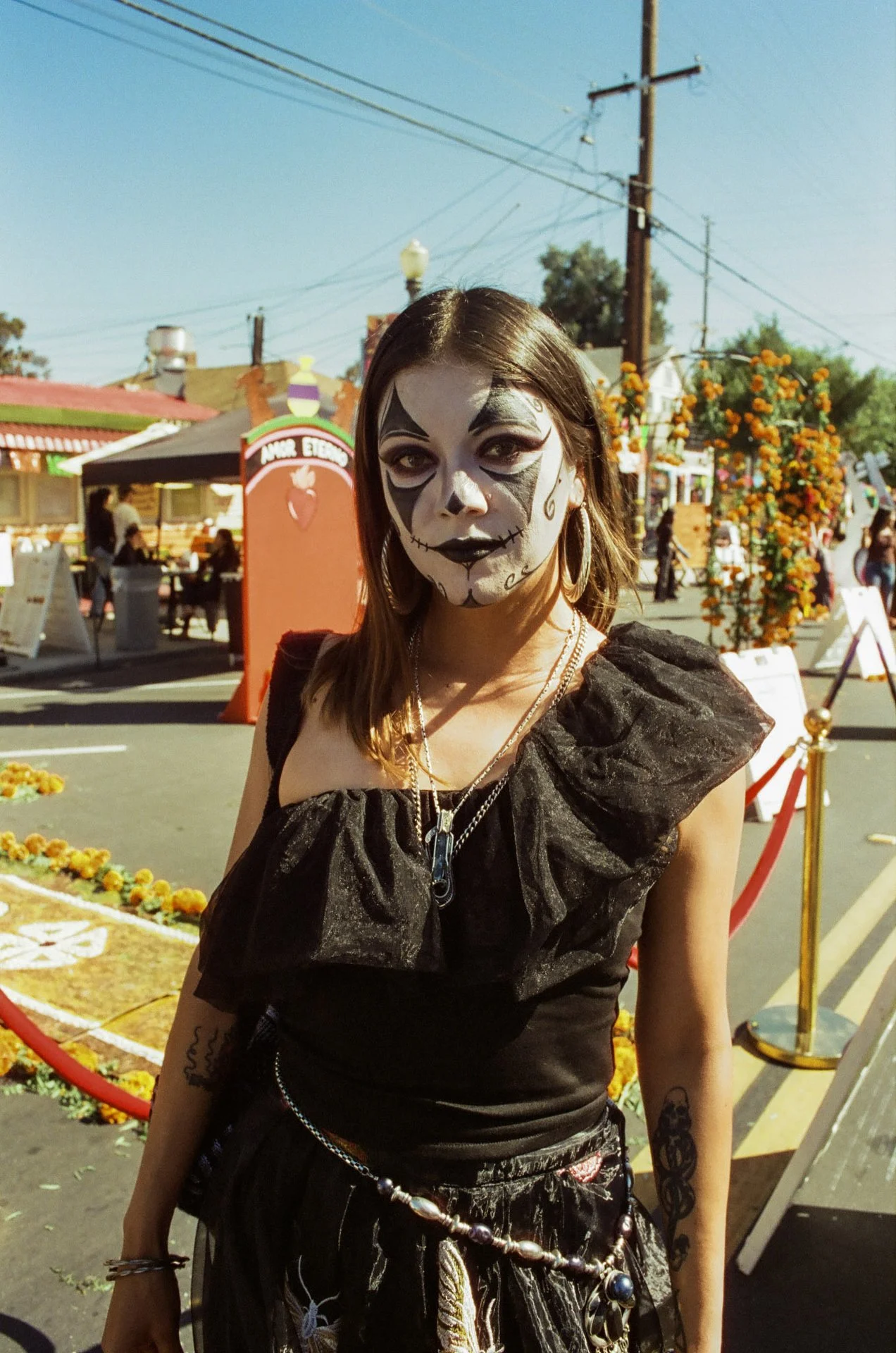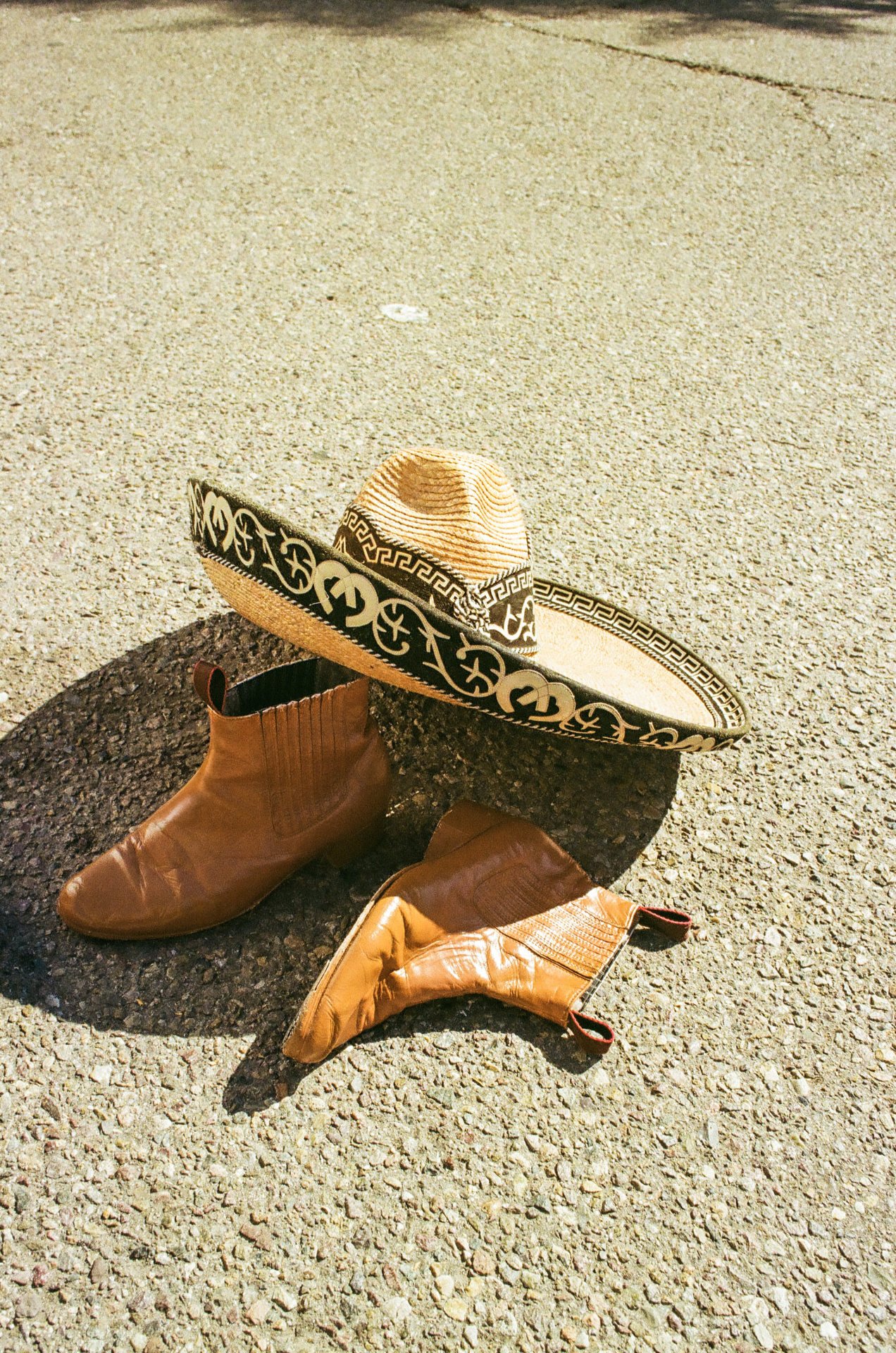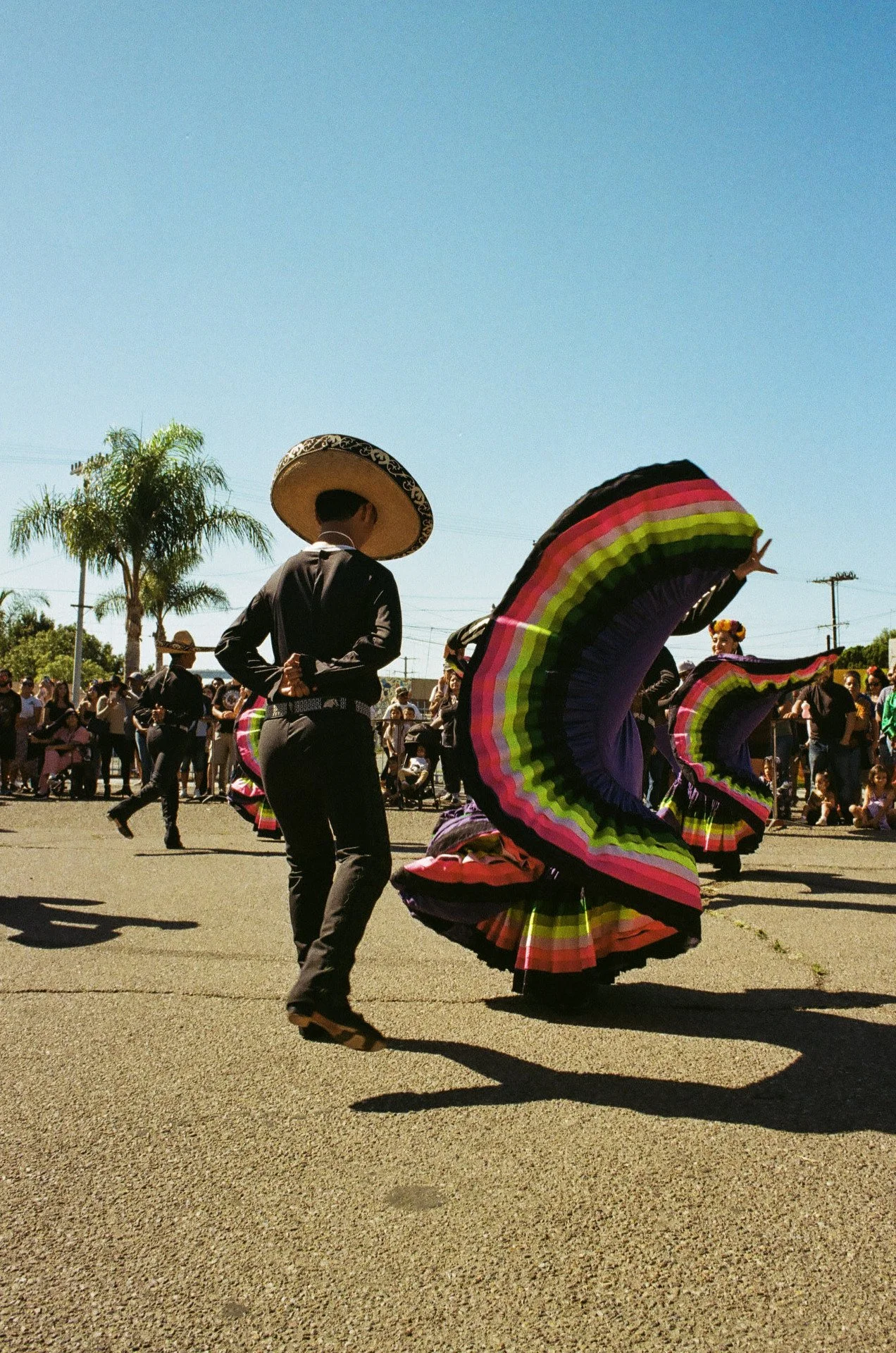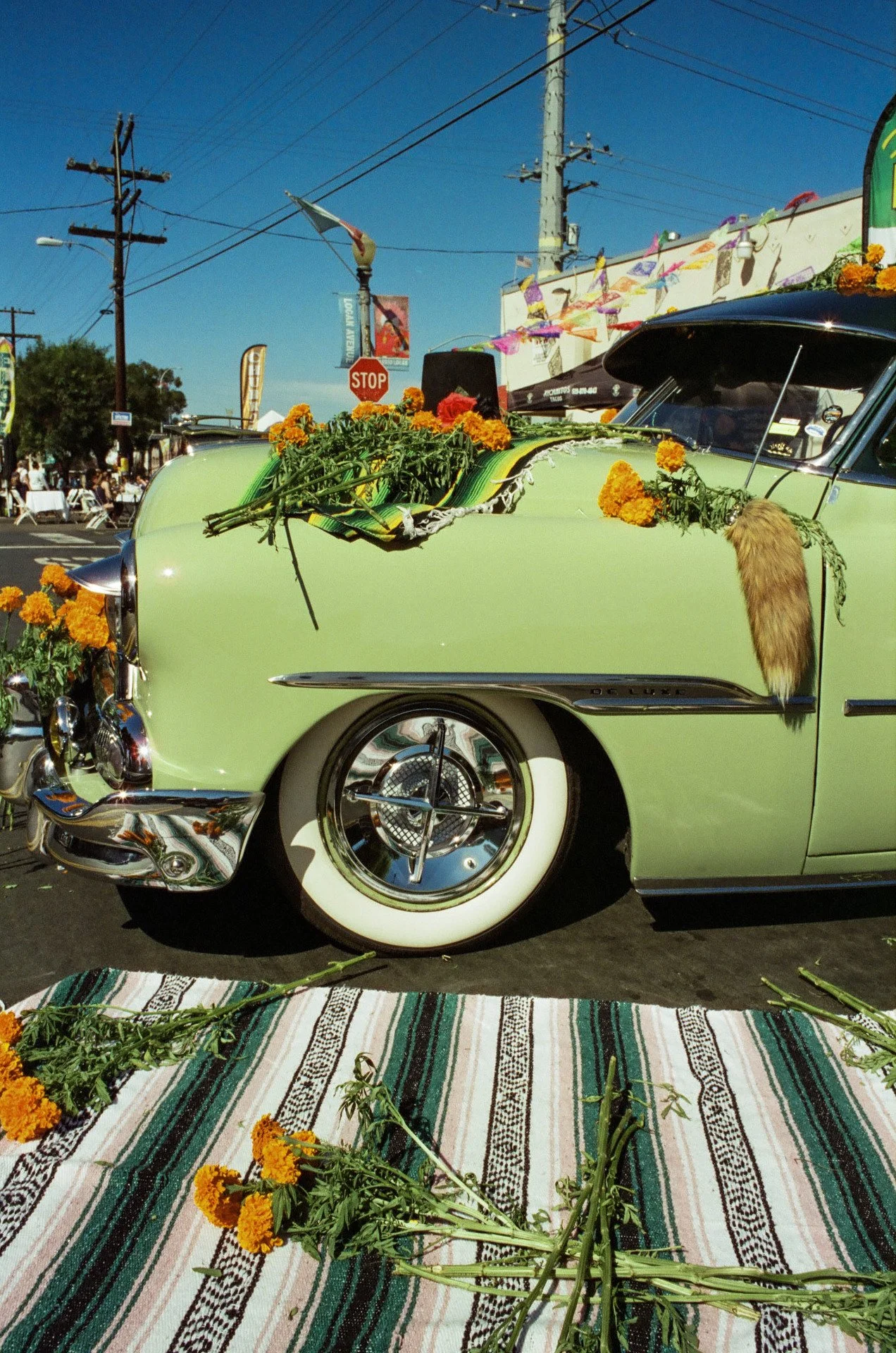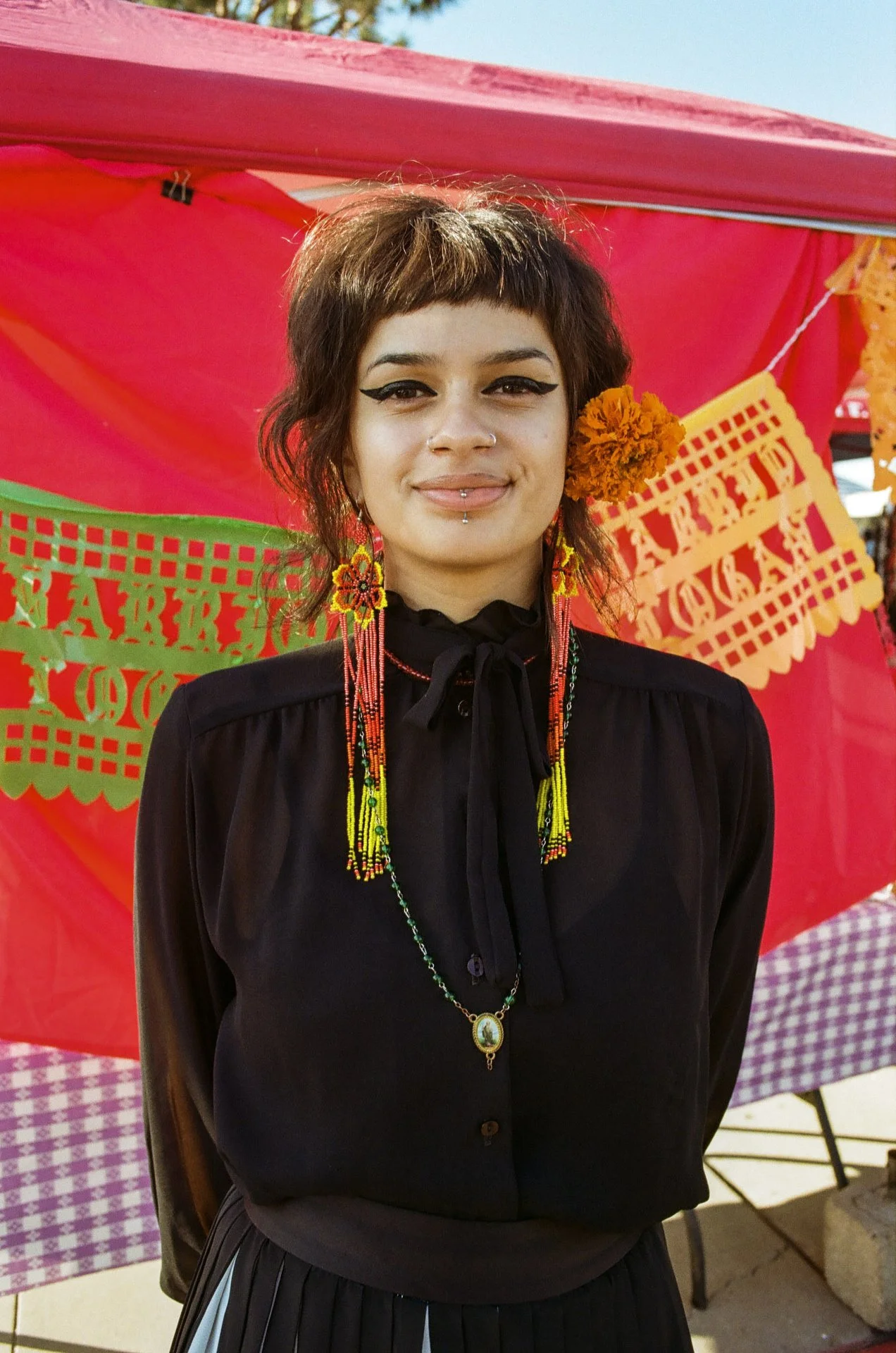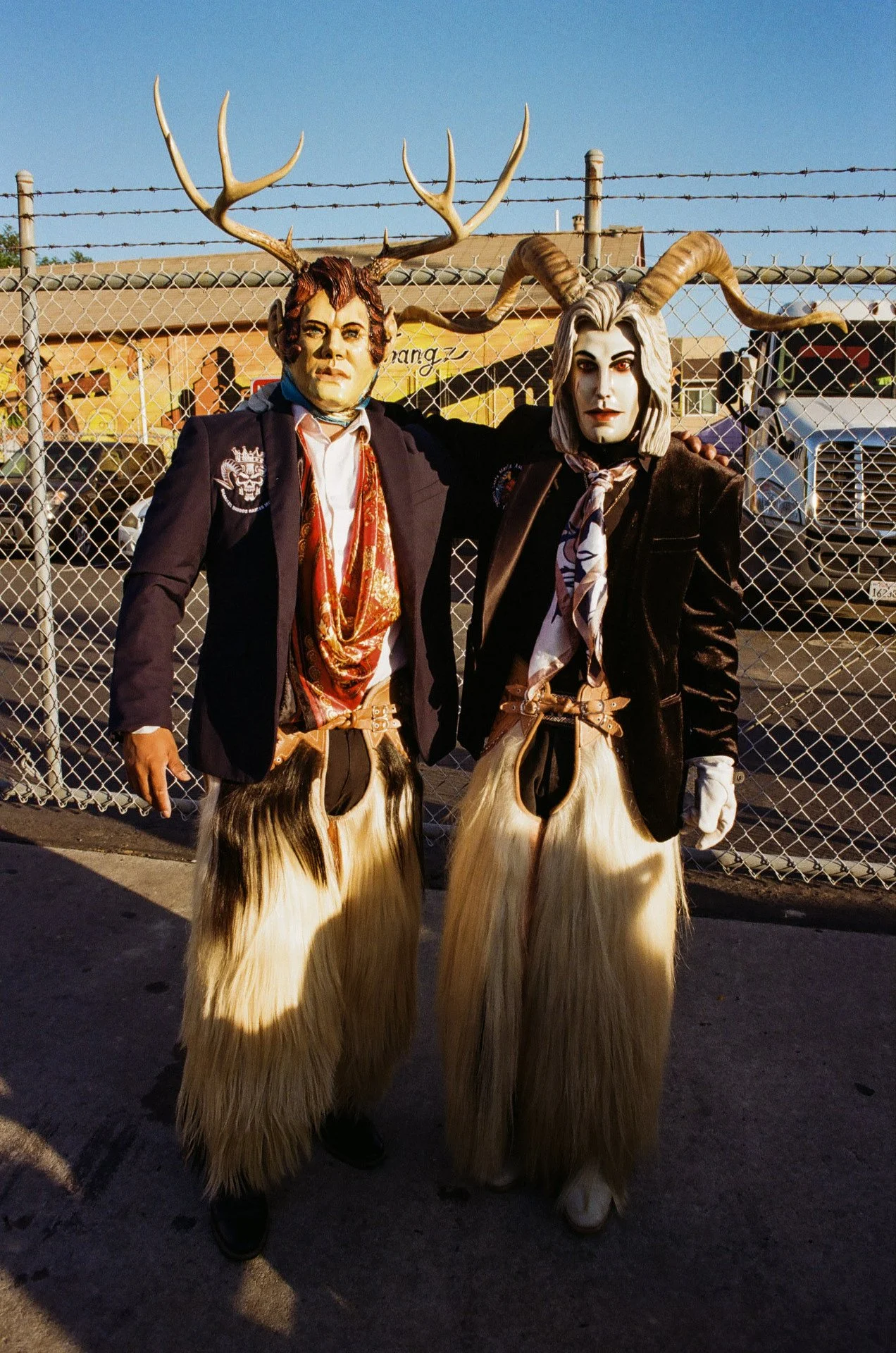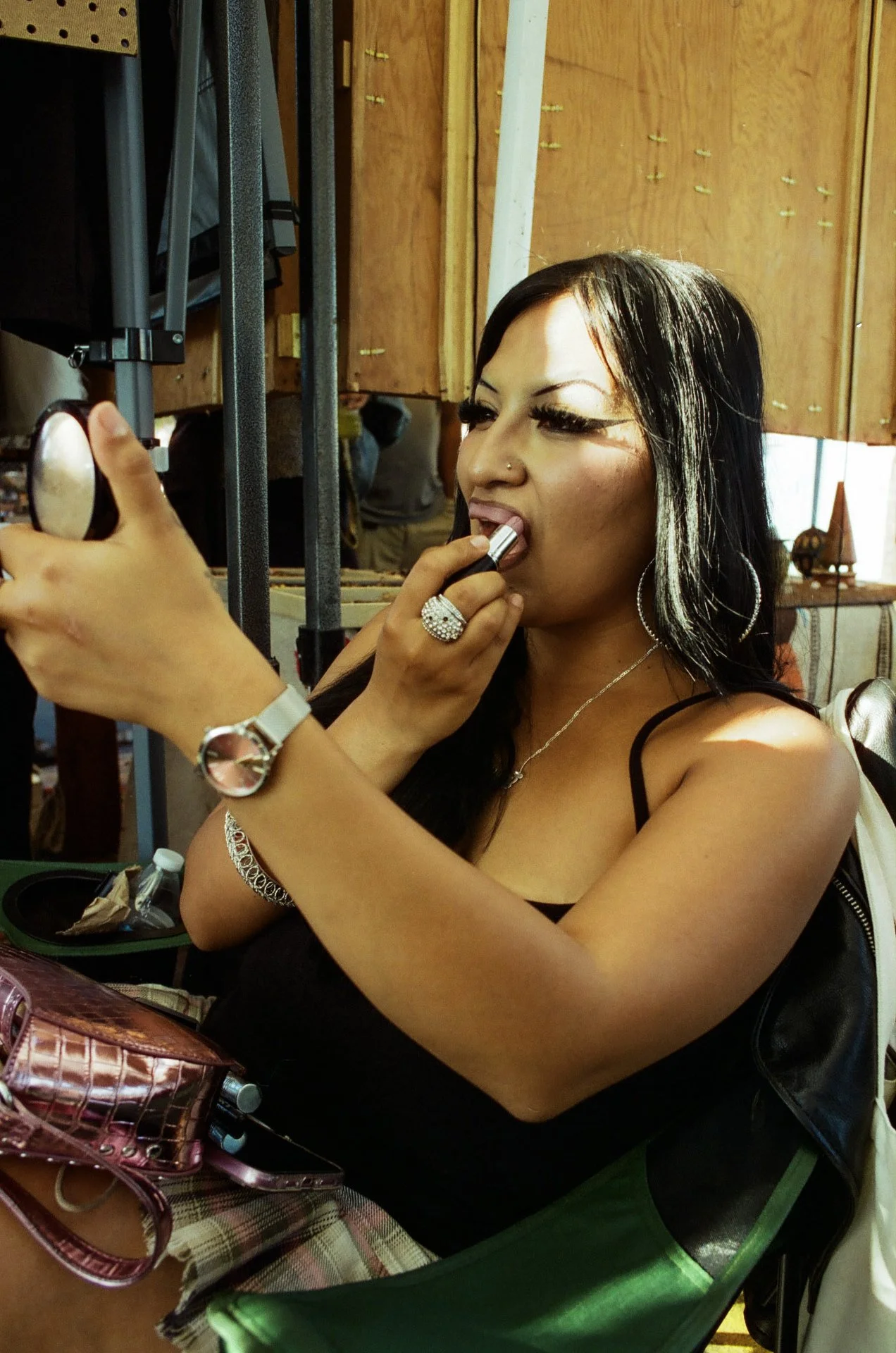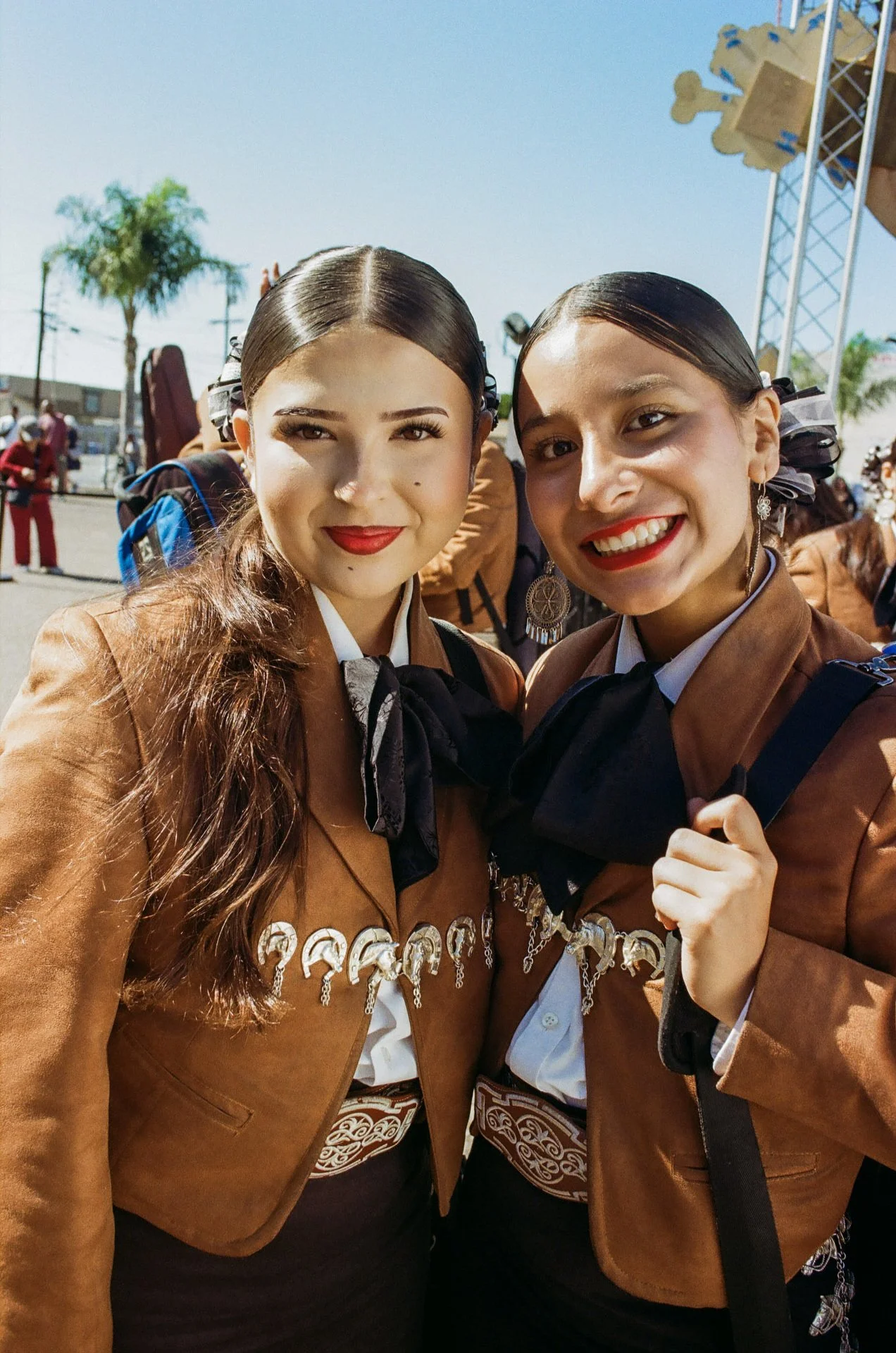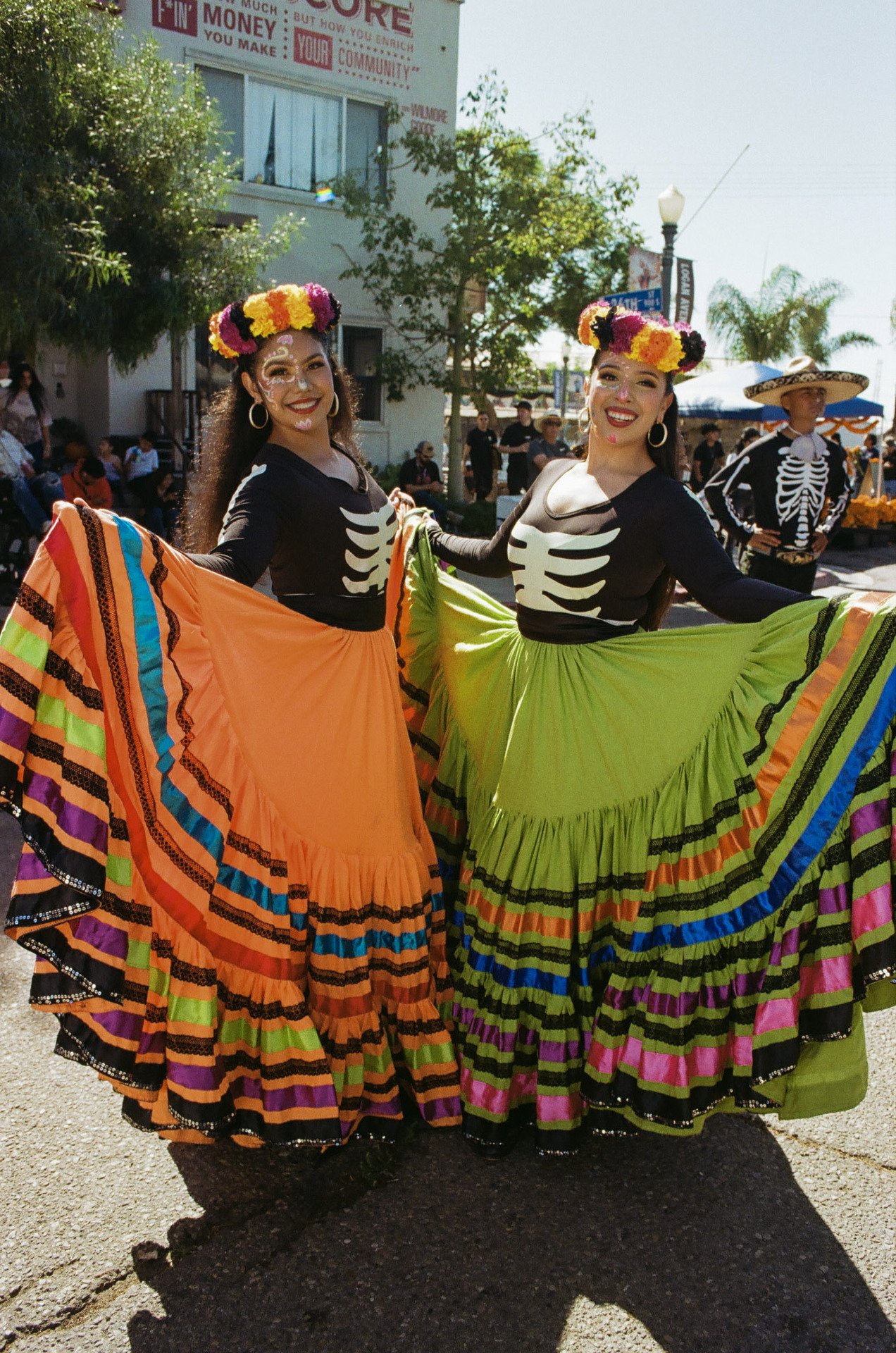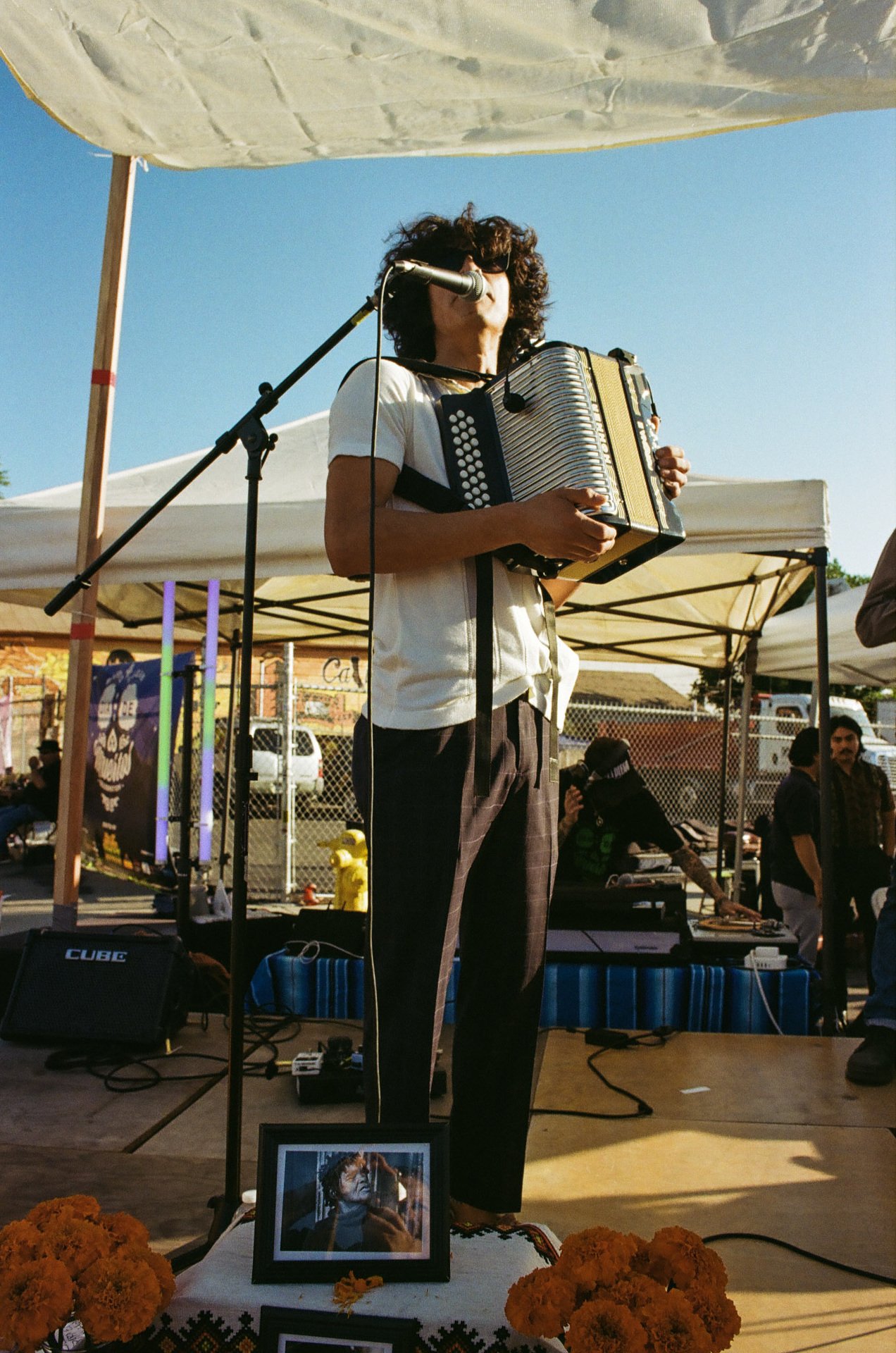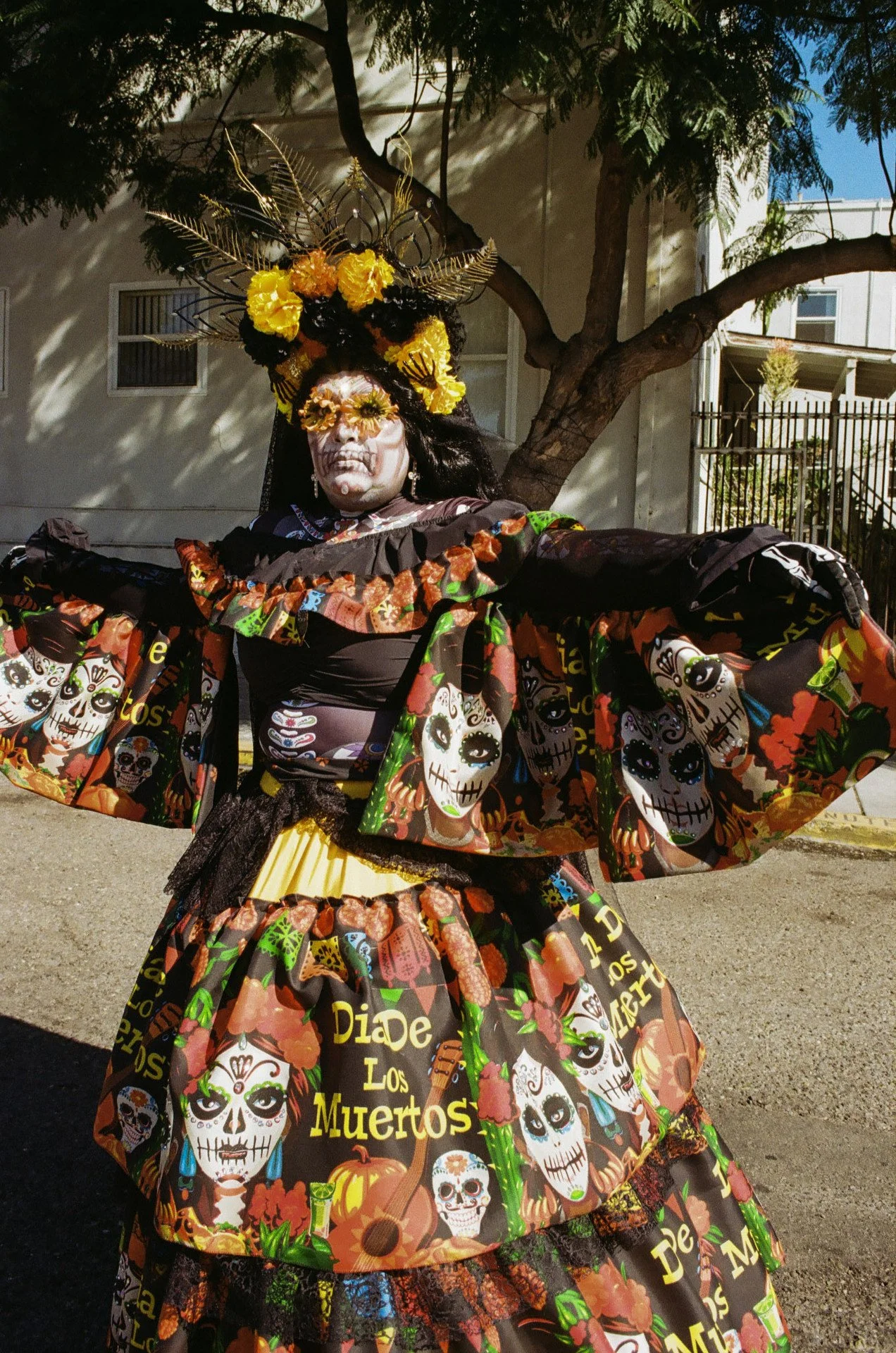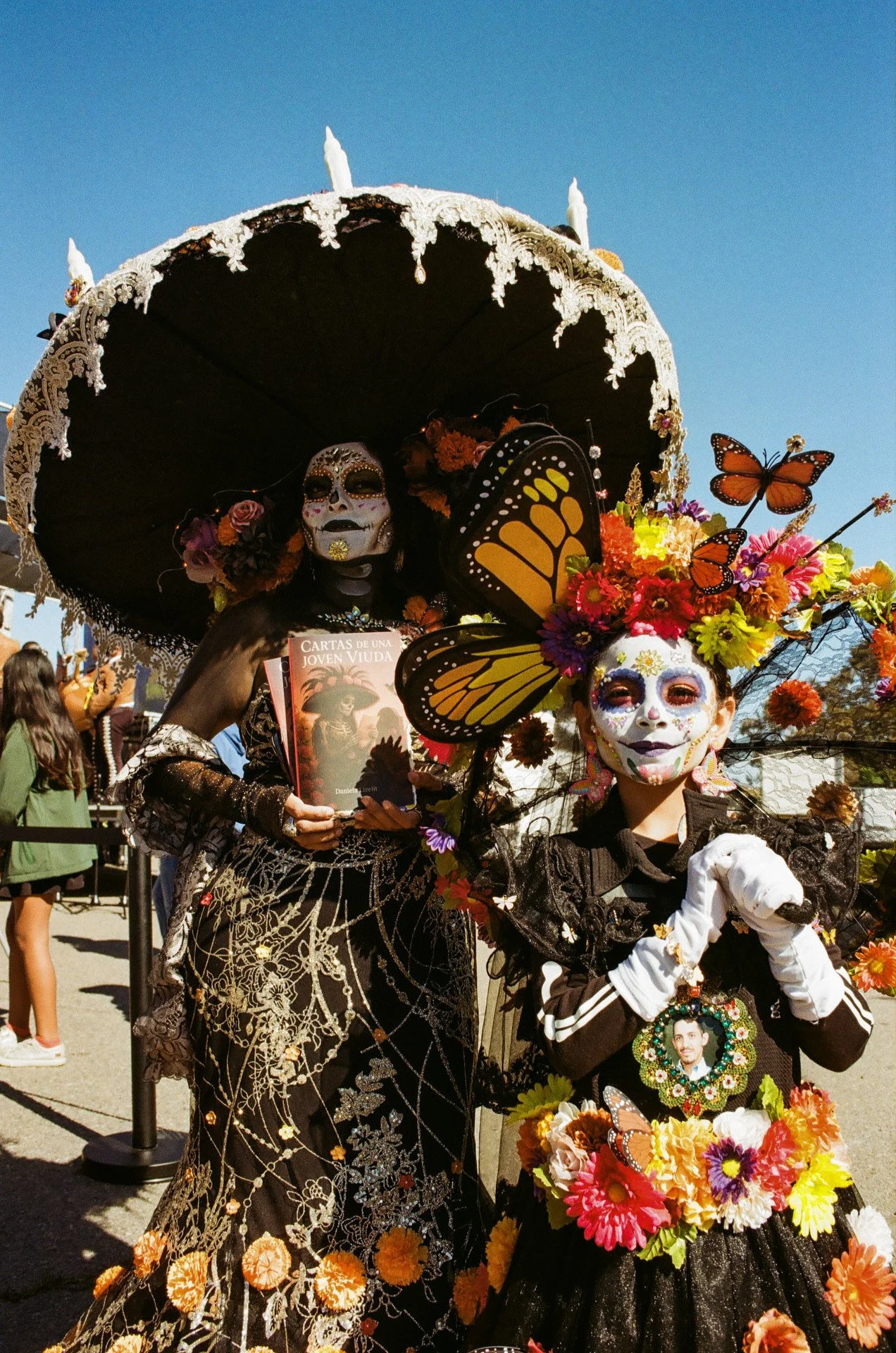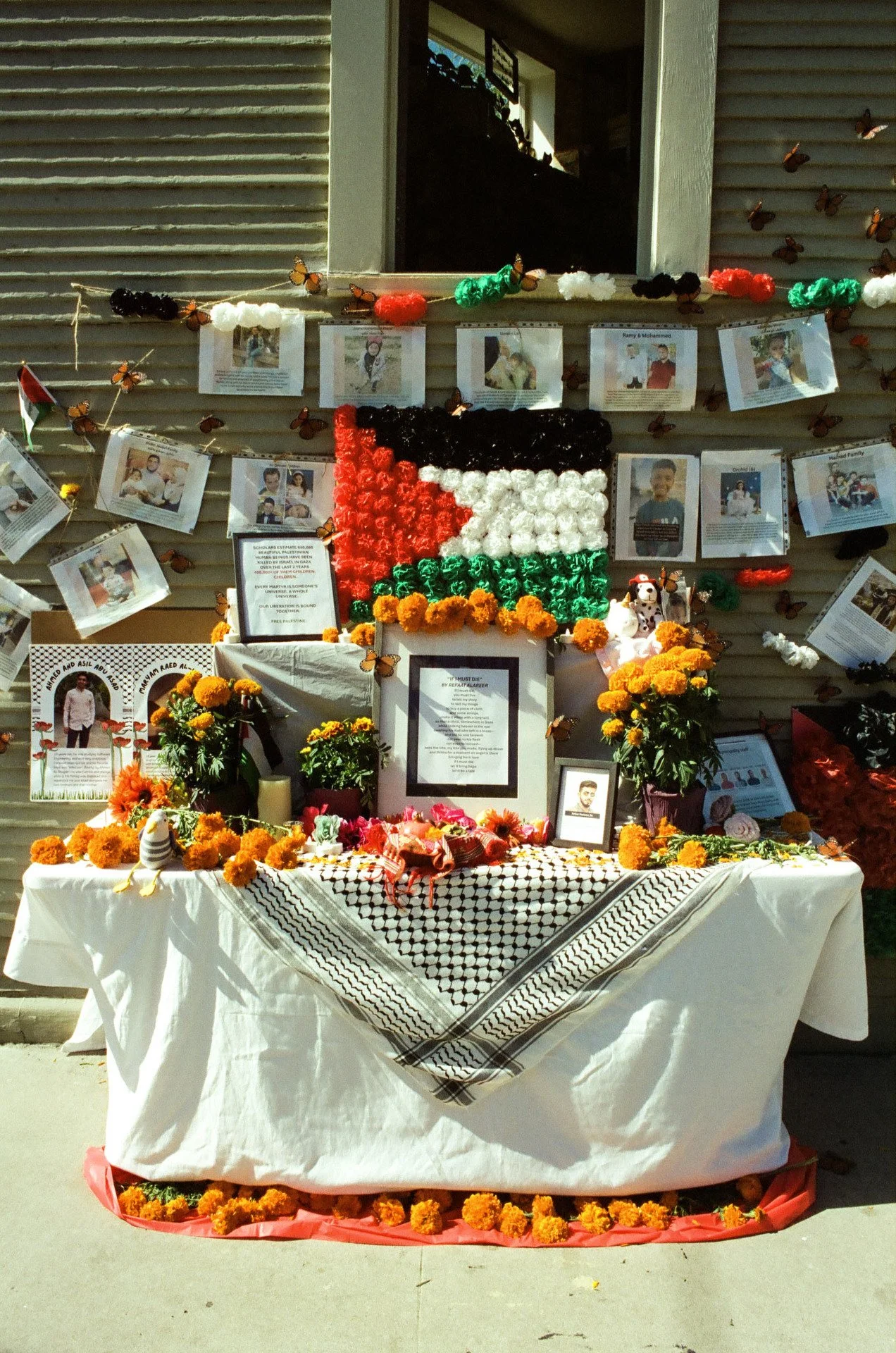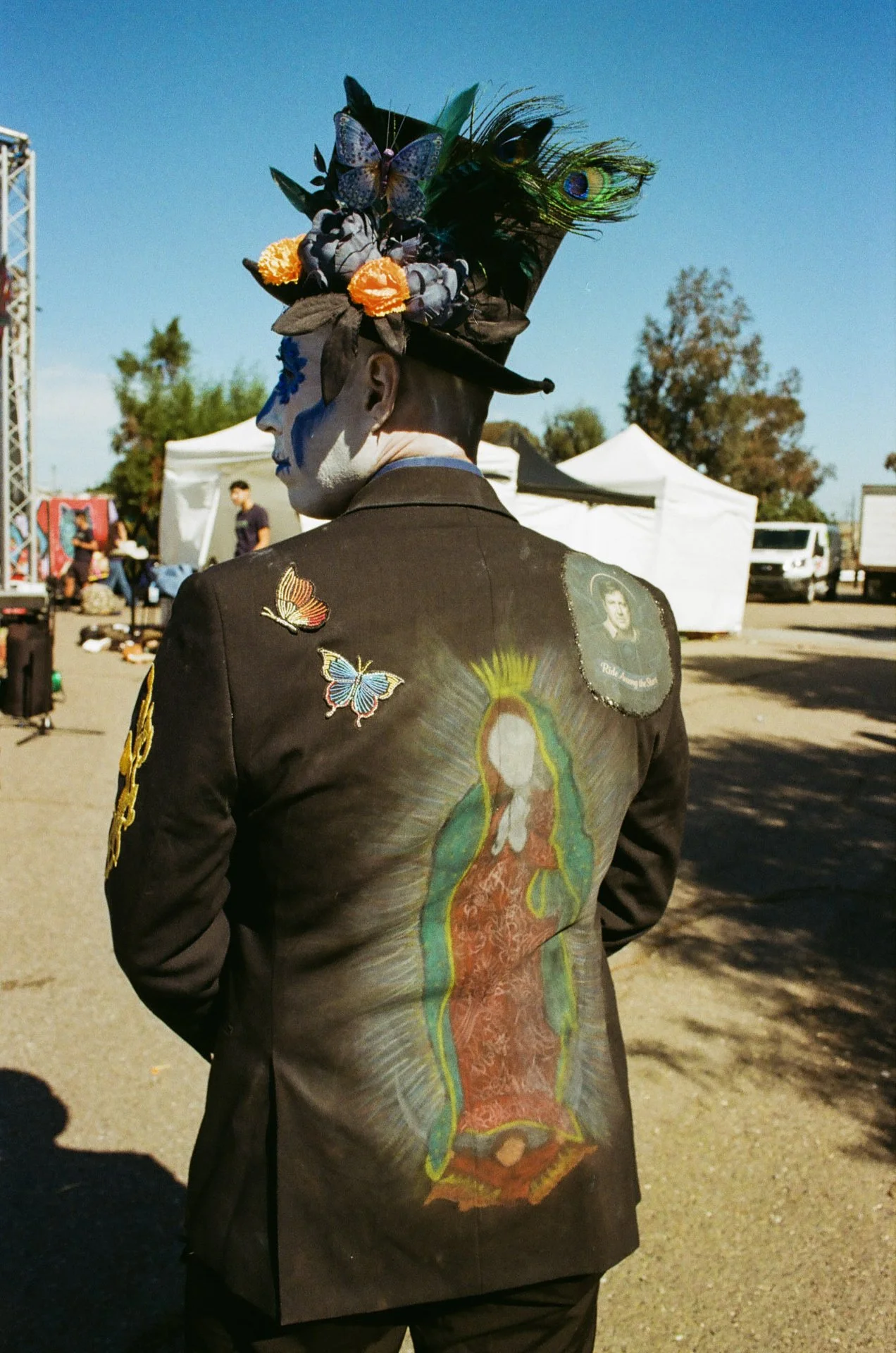At Barrio Logan’s Día de Muertos, Checka Sardina finds ‘Our faces, our culture, our block, our history.’
For photographer Checka Sardina, who spent her childhood visiting her grandmother just blocks from Chicano Park’s towering murals, Barrio Logan has long been part of her story: a place that represents generations of resistance and solidarity.
Her pictures, too, are parts of that canon. She photographs not only to remember that or to express her artistic vision but also to preserve the history of her own community.
She did just that at this year’s Barrio Logan Día de Muertos, presented by San Diego Foundation. The all-day celebration, hosted by All for Logan and supported by the Barrio Logan Association, was a stunning display of community and culture right at the epicenter of San Diego’s Chicano community.
“This photo is of my dear friend “Abuelo,” a deeply respected member of the Barrio Logan community. He’s been lowriding and documenting life in the barrio for decades. I love photographing him and listening to his stories. They’re always full of life, history, and meaning. Abuelo is an active presence in the community and is always involved with community events.”
Safelight: Tell me about your relationship to Barrio Logan. What does this community mean to you?
Checka: This is the neighborhood where I did a lot of my growing up. I spent most of my teenage years here, and it continues to shape who I am today in my adult life. This place taught me the true meaning of community, culture, and healing. Barrio Logan carries a deep history of resilience, creativity, and countless stories. This community embraced me while I was still finding myself, reminding me that community isn’t just about where you come from, it’s something you build together. For that, Barrio Logan will always hold such a special place in my heart. These streets held me close when I needed it most, in the process, they became home.
“After fifteen minutes of nonstop dancing, this young boy tossed his hat aside and kicked off his shoes immediately & started to stretch and unwind after a huge performance. I had to snag a quick detail shot.”
The lowriding movement has long been a source of empowerment for Black and Brown communities. Though often misrepresented as criminal, it has always served as a sanctuary for self-expression, family tradition, and the preservation of cultural history.
Safelight: Tell me about your approach to this day of photography. What did you hope to accomplish and what was the actual day like for you?
Checka: It was all about intention and being fully present. Sometimes I get caught up in trying to capture everything and forget to actually experience what’s happening around me. This time, I wanted to slow down and truly feel the day, to live in it, not just document it. That’s also why I chose to shoot on film. Film forces me to move with care, to look, breathe, and shoot with love and intention.
I must’ve walked up and down the street ten times, and each pass felt completely different. The energy kept shifting from the sound of drums and laughter to the smell of copal and food, to quiet moments of people standing in front of altars. Everywhere I looked, there was beauty! Artists painting, Aztecas moving with purpose, elders blessing the crowd. It was emotional, grounding, and humbling all at once. I wanted my photos to reflect not just what it looked like, but what it felt like to be there.
“A portrait of my homegirl, a member of the cumbia band La Maguana. Glowing in the sun, with her beaded earrings sparkling and a marigold tucked behind her ear pure beauty from afar.”
Father and son prepare for their performance, making their way down Logan Ave from Chicano Park to the main stage.
Danza de los Diablos” (Dance of the Devils) is a traditional Afro-Indigenous dance from the coastal regions of Guerrero and Oaxaca, Mexico, particularly practiced by the Afro-Mexican communities there.
“I love capturing women doing their lip liner and lipstick. It reminds me of my tías. For so many Latinas, it’s more than makeup; it’s our ritual, our warrior paint.”
Safelight: What can we learn about Barrio Logan from this event and from your pictures?
Checka: Barrio Logan is sacred ground, a neighborhood built by Black and Brown hands and sustained by generations of resilience. A place where art and activism meet, and where every wall and mural carries the weight of history.
When I photograph here, my goal is to honor all of that. I want to capture the strength of the families who’ve called this place home for generations, the artists who continue to tell our stories through their art, colors and movement, and the younger generation who are keeping that spirit alive.
People often come to Barrio Logan and see the art, but what they’re really witnessing is decades of community, protest, and survival. This neighborhood isn’t a backdrop. It’s living proof of what it means to create beauty out of struggle and to protect something sacred through unity and love.
“I captured this portrait during the Danza de los Diablos performance. This señora’s radiant smile was so important, in a world facing so much hardship, witnessing her find joy and connection through cultural expression felt deeply meaningful. A reminder that through our cultural traditions, we continue to find peace, love, and resilience.”
“Two young mariachi performers, glowing with sweet smiles and post-performance adrenaline. Moments like this show the pride and passion that keep our vibrant musical traditions alive.”
Safelight: Día de Muertos is an opportunity to connect with relatives and ancestors who came before us. How do you see your family and your heritage show up in your photography?
Checka: I pull a lot of my inspiration from family photos. The ones that feel a little worn, sun-faded, or torn but full of life. The way my family was captured, or sometimes wasn’t , really shaped how I approach photography. I think about the moments I wish were documented, the laughter, the chaos, the softness and that’s what I try to capture now. Everything I create comes from that longing to preserve what I’ve seen, what I’ve felt, and what I never want forgotten. My heritage shows up in the colors, the traditions, the emotion, and the honesty of my images. It's my way of continuing the visual language my ancestors started, even if they didn’t have cameras to tell their stories. I’m deeply grateful for sacred days like Día de Muertos, a time that allows us to pause, remember, and celebrate the spirits of those who came before us and my beloved father who passed. It’s a day that allows me to feel his presence one more time , to connect with his soul in a way that feels both comforting and powerful.
“I walked up to these two sweet angels for a photo, and one to the left smiled so big. She said, “Thank you for what you do for the community-I’ve followed you for so long, and I’m so happy to finally have my photo taken by you.” My heart melted. These are the moments that remind me why I do what I do.”
“Bucky and Ana Brown, the heart behind Las Sucias, are pillars of love and strength in our community. They’ve carved out spaces where we can feel safe, seen, and celebrated. Forever grateful for the way they continue to inspire and uplift those of us born and raised here.”
Safelight: You talk about your work as an exercise in preserving culture. Erasure has been a constant throughout history, but feels particularly pronounced and violent in today’s America. How does that affect the work you do?
Checka: Erasure isn’t new but it does feel louder and intentional. It's been happening to our people, our neighborhoods, and our stories for generations. But right now, it feels more violent, more disguised as “progress.” That’s exactly why my work exists, and it feels more urgent to keep documenting. My photography is about protecting what’s ours, our faces, our culture, our block, our history. When I document my community, I’m creating evidence, not just art. I’m saying “we were here, we are here, and we’re not going anywhere!”
I focus on the people and spaces that carry that legacy, the elders, the youth, the artists, the everyday moments that deserve to be seen and remembered. My camera gives me a way to push back against erasure, to reclaim how we’re seen and who gets to tell our story. My photographs are love letters to my community, but they’re also acts of resistance. They hold truth and memory in a world that constantly tries to silence or reshape us.


